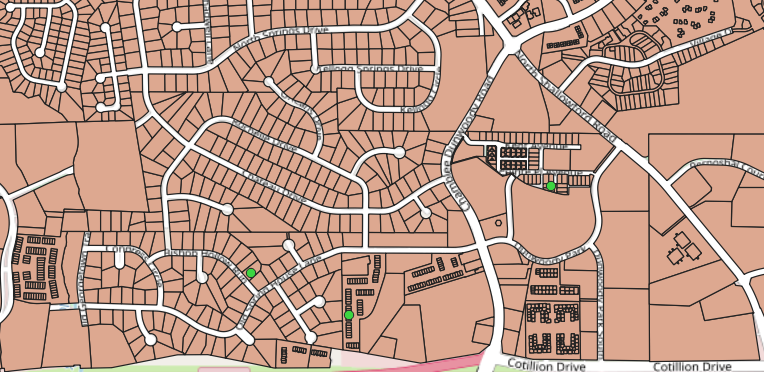I need some terminology help as I am still learning GIS.
I have two datasets. One with the address of every fire and it's latitude/longitude of small census tract. One with the location of every parcel of land (property) within that census tract. I need to join or match the two datasets so I end up with a map of every property that has ever had a fire and a list of the properties without ever having a fire. I thought it might be similar nearest neighbor or involve R-trees. However, every time I look for a way of doing this I run into methods of "matching point within the same dataset" not what I need. I have to use two different datasets.
What exactly is this type of matching or joining between nearest lat/long of different datasets called in GIS terminology?
To help answer this question let me show two different dataset with slightly different situations: (It took me a minute of searching to find these polygons) First is the my actual GA data. This data is only of 3 months:
[![Dekalb GA County Fires][1]][1]
In it, every green point is a building fire, while every brown shape is a building. About 95%-98% of the data overlays a parcel, so I think is a point in polygon overlay.
[1]: https://i.sstatic.net/S2tii.png
